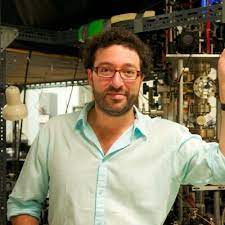One of the most famous tidbits of received wisdom about quantum mechanics is that one cannot ask which path a photon took in an interferometer once it reaches the screen, or in general, that only questions about the specific things you finally measure are well-posed at all. What, then, do present observations tell us about the state of the world in the past? I will describe one-and-a-half recent experiments looking into aspects of this.
The principal experiment I wish to tell you about addresses a century-old controversy: that of the tunneling time. Since the 1930s, and more heatedly since the 1980s, the question of how long a particle spends in a classically forbidden region on those occasions when quantum uncertainty permits it to appear on the far side has been a subject of debate. Using Bose-condensed Rubidium atoms cooled down below a billionth of a degree above absolute zero, we have now measured just how long they spend inside an optical beam which acts as a “tunnel barrier” for them. I will describe these ongoing experiments, as well as proposals we are now refining to study exactly what happens during the time it takes to “collapse” an atom to be in the barrier.
I will also try to say a few words about a more recent experiment, which revisits the common picture that when light slows down in glass, or a cloud of atoms, it is because the photons “get virtually absorbed” before being sent back along their way. It turns out that although it is possible to measure “the average time a photon spends as an atomic excitation,” there seems to be no prior work which directly addresses this, especially in the resonant situation. We carry out an experiment that lets us distinguish between the time spent by transmitted photons and by photons which are eventually absorbed, asking the question “how much time are atoms caused to spend in the excited state by photons which are not absorbed?”

 The College of Arts
The College of Arts